 LITTLE ROCK, Ark.-A series of small earthquakes that rattled central Arkansas in recent weeks could be a sign of something much bigger to come.By this weekend, seismologists hope to install three measurement devices to gather data about future temblors in the area.That information could show whether the rumbles come from heat-related geological changes or from an undiscovered fault-which could mean a risk of substantial earthquakes in the future."The potential for generating a high-magnitude earthquake is real," said Haydar Al-Shukri, director of the Arkansas Earthquake Center at the University of Arkansas at Little Rock.Five earthquakes ranging in magnitude from 2.2 to 2.7 have hit central Arkansas this month. Quakes with a magnitude of 2.5 to 3 are typically the smallest felt by people.While hundreds of earthquakes occur each year, including several in Arkansas, the location of the recent ones give Al-Shukri pause. Arkansas quakes generally occur in the state's northeast corner, part of the New Madrid Seismic Zone, where three temblors with magnitudes of around 8 struck during the winter of 1812 and smaller ones continue today.But central Arkansas does not have any seismic history, Al-Shukri said."It is abnormal. It is significant," he said. "We need to carefully watch this activity."The area does not have any permanent seismograph, so researchers asked the University of Memphis in Tennessee if they could use its portable equipment.The nearest seismographs aren't close enough to provide the detailed readings scientists need to determine what could be causing the tremors or properly locate their origin, said Scott Ausbrooks, the geohazard supervisor for the Arkansas Geological Survey."I don't know if you've looked at a map of where these events are located, but they've got a scatter on them," he said. "We're thinking this is probably the inherited error built in when you try to locate events of this small a magnitude from that far away."Ausbrooks said officials would install the three seismographs around Magnet Cove, a Hot Spring County community near where a magnitude-2.7 earthquake hit on Nov. 1. Residents told police dispatchers they heard what sounded like an explosion.One possible culprit could be a hydrothermal quake, caused by extremely hot fluid pushing into rocks under the surface. The hot fluid percolates into the cracks of the rocks and causes movement, Al-Shukri said.That theory matches the geologic history of the area. Central Arkansas is home to Hot Springs, a city that grew up around its namesake spas. The springs have 143-degree waters rushing to the surface continuously.If that's the case, the earthquakes likely wouldn't pose a drastic danger to the area, Al-Shukri said. At their strongest, such quakes reach only a magnitude of 5, the U.S. Geological Survey's threshold for "moderate."However, if the earthquakes are caused by a previously unknown fault, that could mean a much more powerful temblor in the future. A recently discovered fault in eastern Arkansas near Marianna caused an earthquake with a magnitude of between 7.2 and 7.5 in the past 5,000 years, Al-Shukri said. That could cause widespread, heavy damage."Now, it's not active, but in geologist time, that's yesterday," he said.Ausbrooks wouldn't speculate on what could be causing the earthquakes, saying he wanted to see what data the seismographs capture. However, he acknowledged an unknown fault could be running through the area."There are numerous faults across the state, both known and unknown," Ausbrooks said. "This area has got a lot of faults associated with it from the mountain building of the Ouachitas, but they're considered inactive."
LITTLE ROCK, Ark.-A series of small earthquakes that rattled central Arkansas in recent weeks could be a sign of something much bigger to come.By this weekend, seismologists hope to install three measurement devices to gather data about future temblors in the area.That information could show whether the rumbles come from heat-related geological changes or from an undiscovered fault-which could mean a risk of substantial earthquakes in the future."The potential for generating a high-magnitude earthquake is real," said Haydar Al-Shukri, director of the Arkansas Earthquake Center at the University of Arkansas at Little Rock.Five earthquakes ranging in magnitude from 2.2 to 2.7 have hit central Arkansas this month. Quakes with a magnitude of 2.5 to 3 are typically the smallest felt by people.While hundreds of earthquakes occur each year, including several in Arkansas, the location of the recent ones give Al-Shukri pause. Arkansas quakes generally occur in the state's northeast corner, part of the New Madrid Seismic Zone, where three temblors with magnitudes of around 8 struck during the winter of 1812 and smaller ones continue today.But central Arkansas does not have any seismic history, Al-Shukri said."It is abnormal. It is significant," he said. "We need to carefully watch this activity."The area does not have any permanent seismograph, so researchers asked the University of Memphis in Tennessee if they could use its portable equipment.The nearest seismographs aren't close enough to provide the detailed readings scientists need to determine what could be causing the tremors or properly locate their origin, said Scott Ausbrooks, the geohazard supervisor for the Arkansas Geological Survey."I don't know if you've looked at a map of where these events are located, but they've got a scatter on them," he said. "We're thinking this is probably the inherited error built in when you try to locate events of this small a magnitude from that far away."Ausbrooks said officials would install the three seismographs around Magnet Cove, a Hot Spring County community near where a magnitude-2.7 earthquake hit on Nov. 1. Residents told police dispatchers they heard what sounded like an explosion.One possible culprit could be a hydrothermal quake, caused by extremely hot fluid pushing into rocks under the surface. The hot fluid percolates into the cracks of the rocks and causes movement, Al-Shukri said.That theory matches the geologic history of the area. Central Arkansas is home to Hot Springs, a city that grew up around its namesake spas. The springs have 143-degree waters rushing to the surface continuously.If that's the case, the earthquakes likely wouldn't pose a drastic danger to the area, Al-Shukri said. At their strongest, such quakes reach only a magnitude of 5, the U.S. Geological Survey's threshold for "moderate."However, if the earthquakes are caused by a previously unknown fault, that could mean a much more powerful temblor in the future. A recently discovered fault in eastern Arkansas near Marianna caused an earthquake with a magnitude of between 7.2 and 7.5 in the past 5,000 years, Al-Shukri said. That could cause widespread, heavy damage."Now, it's not active, but in geologist time, that's yesterday," he said.Ausbrooks wouldn't speculate on what could be causing the earthquakes, saying he wanted to see what data the seismographs capture. However, he acknowledged an unknown fault could be running through the area."There are numerous faults across the state, both known and unknown," Ausbrooks said. "This area has got a lot of faults associated with it from the mountain building of the Ouachitas, but they're considered inactive."On the Net:
Arkansas Geological Survey: http://www.google.com/url?q=http://www.geology.ar.gov&usg=AFQjCNG3VkwrTeJTB16WaXKP8zASqKt1Gw
UALR Arkansas Earthquake Center: http://www.google.com/url?q=http://quake.ualr.edu&usg=AFQjCNEtSbTk3sjwhxHoa6E6ne0Xv7Mdfw
U.S. Geological Survey: http://www.usgs.gov/
As in the days of Noah....

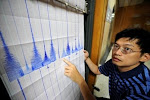
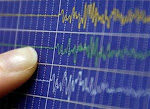
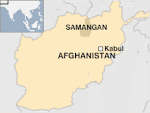







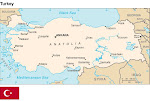
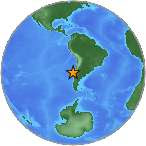




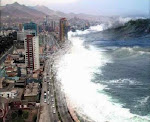

.jpg)


.bmp)
No comments:
Post a Comment